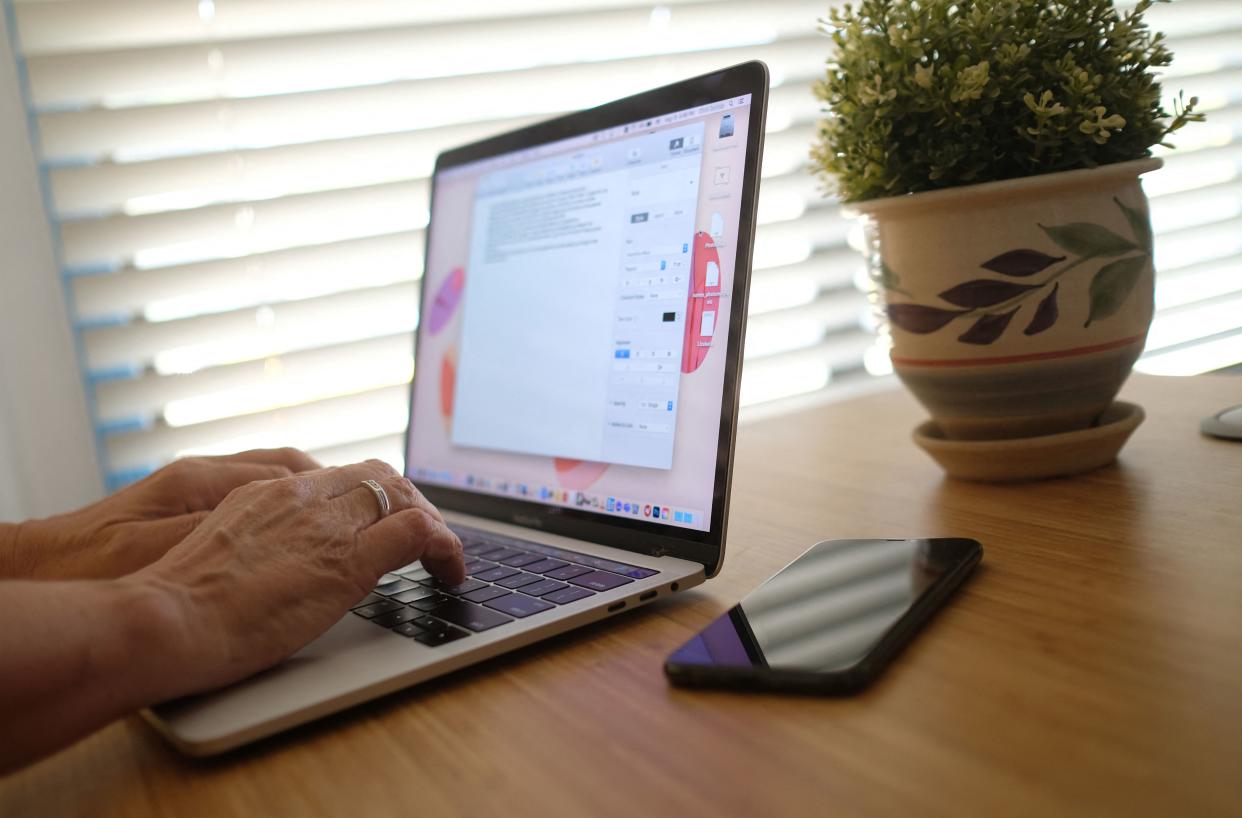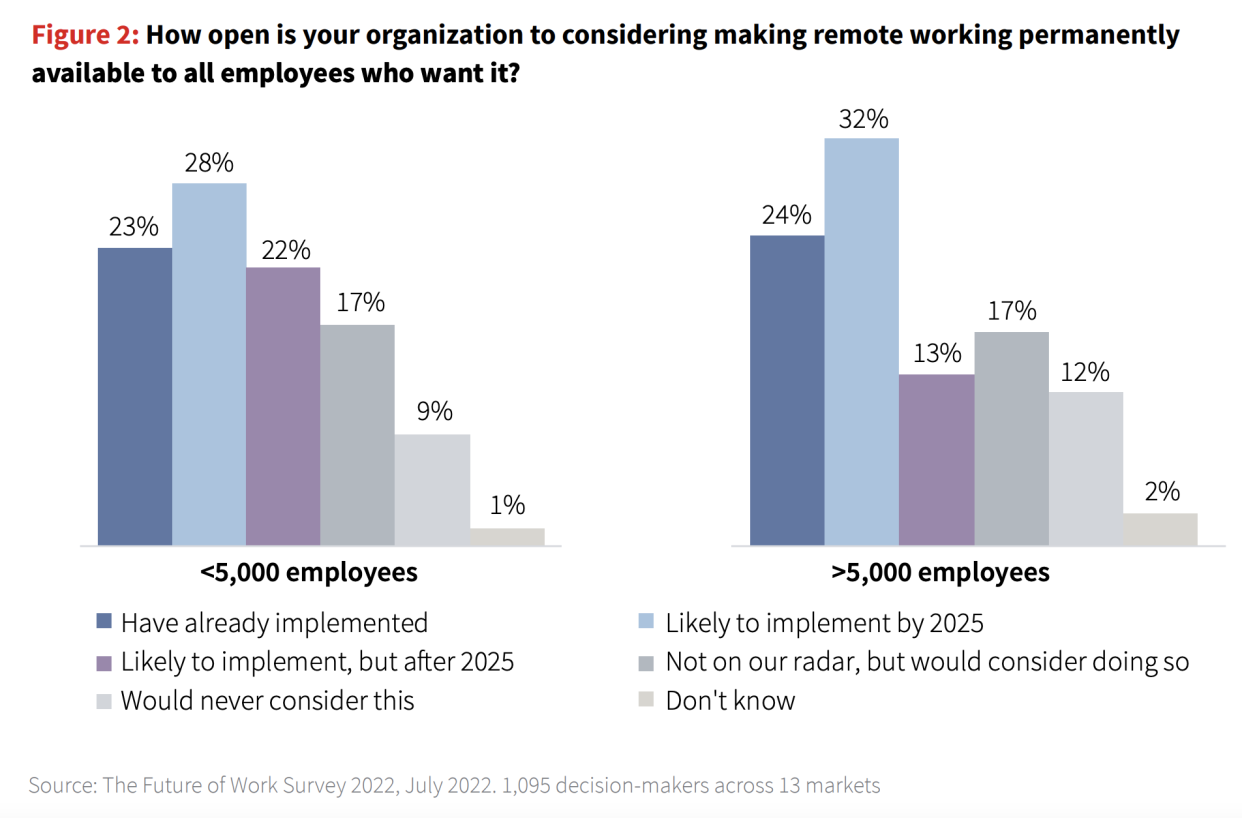Hybrid work: Employees ‘can execute the work from home,’ JLL CEO says
Hybrid work — meaning working partially in person and partially in the office — is catching on with more companies since the onset of the coronavirus pandemic.
According to new data from commercial real estate company JLL, 77% of company leaders either agree or strongly agree that offering remote/hybrid work is critical to attracting and retaining talent. Additionally, 53% of those surveyed said remote working will be made permanently available to all employees by 2025.
“What people realized during the pandemic is that they can execute the work from home as well,” JLL Global President and CEO Christian Ulbrich told Yahoo Finance Live (video above). “Just to do your work, that’s not a reason to come back into the office. It’s about collaboration. It’s about innovation. And so, you have to create an environment which is more attractive in the office than to work from somewhere else.”
To entice employees to return to the office, even for just a few days a week, some companies have resorted to perks like offering free food, more paid time off, and even monetary incentives.

“That would include those options — health and well-being features — which would include great food, snacks, and those types of things, daycare for your children,” Ulbrich said. “It’s complicated, obviously, but people are trying, depending upon which location they are in. So we will see all types of features which will just be a pull for people to get into the office.”
Much of it is also dependent on location, or what Ulbrich described as “culturally driven.”
For example, in the tech-heavy San Francisco where remote work is easily accessible, office occupancy rates are low. Conversely, office occupancy rates are much higher in cities like Dallas and New York.
“It depends very much which city you are in,” Ulbrich said. “It’s very cultural. But what we can see is that the top of the companies want their people back in the office. And then Generation Z and people with young children, they all want to be back in the office as well. It’s kind of a force from the top and a force from the younger generation that they want to get back into the office. They want flexibility.”
An Accenture study from 2021 found that 63% of high-growth companies adopted a "productivity anywhere" workforce model, meaning that hybrid, in-person, or entirely remote work policies are all on the table.

“Occupancy rates are, generally speaking, lower than they were pre-pandemic because more companies are embracing flexibility,” Ulbrich said. “And I think that is the big advantage for people that there isn’t that feeling of ‘I have to be in the office at 8:00 on a Monday morning and I’m leaving at 5:00 on a Friday afternoon,’ that they have that flexibility.”
Meanwhile, for offices trying to figure out how to best utilize space, the courses of action have varied widely across the country.
“If you try to do it very simply, the most successful companies are actually using more space because they add on those different types of spaces, these collaborative spaces, and all kinds of features they’re offering,” Ulbrich said. “Some are just repurposing existing space. Some companies are actually downsizing. So far, there’s no clear trend that we could say at the end of the day, we will have 10, 15% less space being occupied.”
One thing Ulbrich was sure about, however, is that office space is being used much differently than the pre-COVID era.
“We had, before the pandemic, a lot of ‘me space,’” he said. “And now we have a lot of ‘we space’ because the main priority is to collaborate.”
Adriana Belmonte is a reporter and editor covering politics and health care policy for Yahoo Finance. You can follow her on Twitter @adrianambells and reach her at adriana@yahoofinance.com.
Read the latest financial and business news from Yahoo Finance
Download the Yahoo Finance app for Apple or Android
Follow Yahoo Finance on Twitter, Facebook, Instagram, Flipboard, LinkedIn, and YouTube
